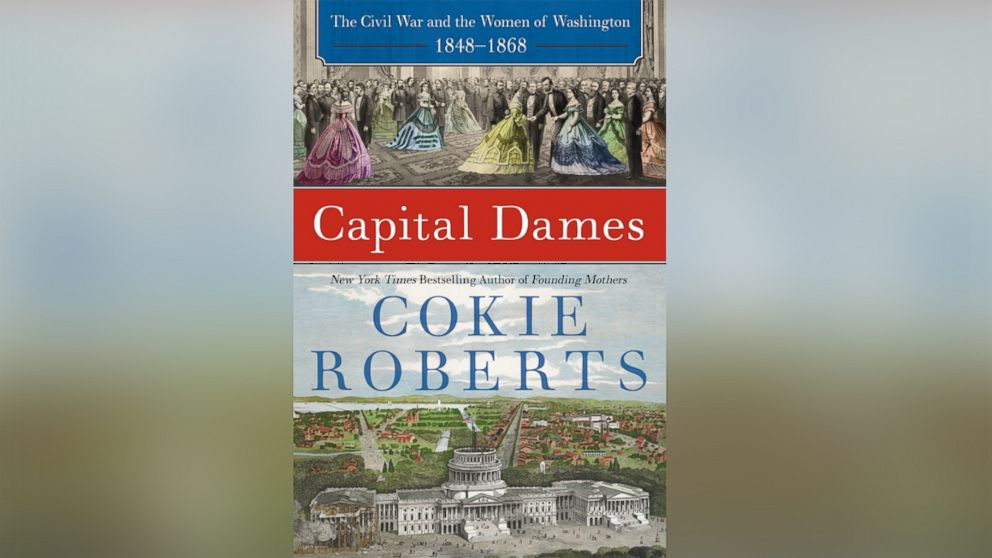Book Excerpt: 'Capital Dames' by Cokie Roberts
An excerpt of 'Capital Dames' by Cokie Roberts

— -- Cokie Roberts joins the "This Week" roundtable Sunday.
Excerpted from CAPITAL DAMES: The Civil War and the Women of Washington by Cokie Roberts. Courtesy of HarperCollins. Copyright © Cokie Roberts 2015
CHAPTER 1: Meet the Women of Washington1848–1856
Church bells chimed their wake-up call for the Capital City just at first light. From the Navy Yard and the Arsenal, sunrise salutes signaled a historic day ahead for tens of thousands of expectant tourists “not only from the immediate vicinity and adjacent cities, but from opposite and distant parts of the Union.” They had crowded into town on special trains ordered up for the momentous occasion, the National Intelligencer excitedly reported, and bright sunlight greeted them after a day of drenching rain. It was July 4, 1848, and the gawkers just might get a glimpse not only of President James Knox Polk and other high- ranking of_cials, but of those two great relics of the founding age— Elizabeth Hamilton and Dolley Madison. The wives of America’s first fierce partisans would come together in seats of honor to preside over the laying of the cornerstone of a monument to the man their husbands both served: George Washington.
Getting to this day was no easy matter. Ever since Washington’s death almost half a century earlier there had been proposals in Congress to erect a fitting shrine to the Father of the Country. In fact, even earlier than that, back in 1783, before the Constitution was written creating the presidency, before a capital had been chosen, Congress resolved to honor General Washington with a statue “at the place where the residence of Congress shall be established.” But so far all attempts at redeeming that pledge had failed— the organizers could never raise enough money or interest. This time was going to be different. Public solicitations plus the formation of an “organization of ladies to aid in collecting funds,” headed by Mrs. James Madison, Mrs. John Quincy Adams, and Mrs. Alexander Hamilton, had collected about $87,000 and created enough momentum to choose a site for a marble cornerstone “weighing twenty- four thousand five hundred pounds”! The Speaker of the House delivered the oration and alluded to the grandes dames Hamilton and Madison “touchingly and eloquently.”
In 1801 the young and beautiful Mrs. Madison had blown into the muddy, miserable town newly designated as the seat of government as the effervescent wife of the secretary of state. She played hostess to hundreds, maybe thousands, through James Madison’s eight years in the Jefferson administration and then the eight years of his own presidency. Already liked by all (Henry Clay once gushed, “Everybody loves Mrs. Madison”), the first lady rose to the level of national heroine during the War of 1812 when she refused to leave the White House as the British approached; she insisted on “waiting until the large picture of Gen. Washington is secured” before fleeing the invasion. With her return to the burned- out ruins a few days later she took up the cause of securing Washington’s place as the Capital City despite its near destruction. “Queen Dolley,” as she was universally called, left office to paeans of praise: “Like a summer’s sun she rose in our political horizon, gloriously, and she sunk, benignly,” proclaimed a newspaper of the opposition party, adding that she had turned Thomas Jefferson’s inaugural pronouncement that “we are all federalists, we are all republicans” from a “liberal sentiment to a practice.”